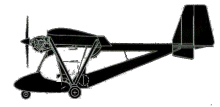
ASN Wikibase Occurrence # 272427
This information is added by users of ASN. Neither ASN nor the Flight Safety Foundation are responsible for the completeness or correctness of this information.
If you feel this information is incomplete or incorrect, you can submit corrected information.
| Date: | Friday 29 July 2011 |
| Time: | |
| Type: |  Micro Aviation B22J Bantam |
| Owner/operator: | South African National Parks |
| Registration: | ZU-FHN |
| MSN: | 09-0337 |
| Fatalities: | Fatalities: 0 / Occupants: |
| Aircraft damage: | |
| Category: | Accident |
| Location: | Bush terrain, about 6nm East of Shingwedzi -
 South Africa South Africa
|
| Phase: | |
| Nature: | |
| Departure airport: | Shingwedzi Aerodrome, Kruger National Park, (Limpopo Province) |
| Shingwedzi Aerodrome, Kruger National Park, (Limpopo Province) | |
| Investigating agency: | CAA S.A. |
| Confidence Rating: |
On 28 July 2011, two pilots flew ZU-FHN, owned and operated by the South African National Parks Board, from Skukuza Aerodrome to Shingwedzi Aerodrome in the Kruger National Park, where the aircraft was to be based. The next day the two pilot's were to fly early in the morning, but decided to do the five-hour cylinder head torque after five hours of flying, on the engine instead, as the fuel that was needed still had to be off loaded. After completion of the five-hour head torque, the aircraft was refuelled and a thorough pre- flight inspection carried out. They then took-off. After being airborne for approximately one hour, they noticed that the oil pressure had dropped to within the yellow arc on the oil pressure gauge. They saw oil leaking from the left side of the engine, which was mounted above and forward of the cockpit. It was decided that they should land before the engine seized. The terrain consisted of young mopani bush, which they started touching at a height of approximately 6 feet above ground level (AGL). At that stage the co-pilot had took control of the aircraft as he was the more experienced pilot of the two. On touchdown he applied brakes and after a ground roll of approximately 24 metres the aircraft collided with a termite mound, hidden beneath one of the mopani bushes. The nosegear collapsed and in turn the engine collapsed onto the nose cowling, obscured their forward view. The aircraft came to rest in a nose-down attitude approximately 23 metres beyond the termite mound. The left wing and tail plane, which consisted of fabric, were found covered with oil. Nobody was injured in the accident. Probable Cause Unsuccessful forced landing following a decrease in engine oil pressure, which was attributed to an engine oil leak from the number six rocker cover, which had not been properly tightened following a re-torque of the head bolts prior to the flight.
Accident investigation:
 |
|
Sources:
S.A. CAA
Revision history:
| Date/time | Contributor | Updates |
|---|
Corrections or additions? ... Edit this accident description
The Aviation Safety Network is an exclusive service provided by:


 ©2024 Flight Safety Foundation
©2024 Flight Safety Foundation